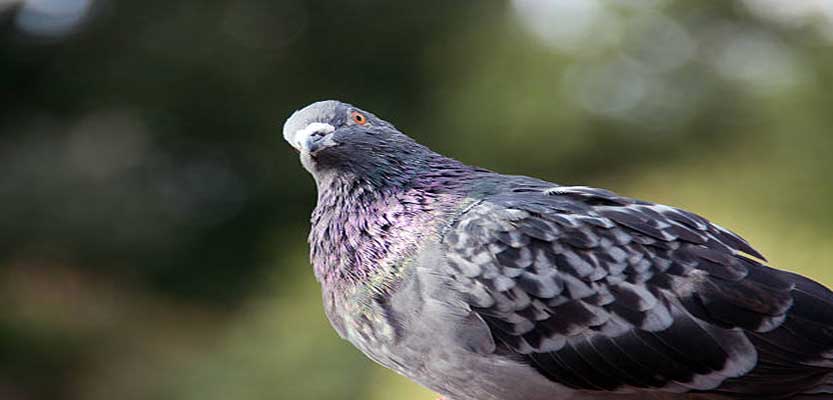
Exploring animal life is always fascinating. Today, we will examine the feral pigeon, also known as a gray urban bird, which typically wanders through parks. Although they appear to be a common species that is easily encountered in everyday life, you may be surprised to learn that they possess some fascinating characteristics.
Rock Doves, Domestic Pigeons, and Feral Pigeons: What is the difference between them?
One of the most frequently asked questions is whether there is a distinction between “dove” and “pigeon.” According to Paul Sweet, a manager in the ornithology department at the American Museum of Natural History, there is no difference between these two terms in scientific terminology because they both refer to the same bird species in the family Columbidae.
This article focuses on the “feral pigeons” that are most closely related to humans. This term is derived from “domestic pigeons,” which are descendants of the “Rock Dove” in the family Columbidae. To clarify, here are the minor distinctions between the three mentioned species:
- The Rock Dove (Columba livia), also known as the common pigeon, is the most ancient member of the Columbidae family. They typically have a pale gray plumage and two black bars on their wings that serve as identifying characteristics.
- Columba livia domestica, also known as the domestic pigeon, is a subspecies of the Rock Dove. Domestic pigeons have the ability to remember the location of their home and, surprisingly, can return there after being released from an unknown location. They were therefore trained to serve as messengers during wars.
- Feral pigeons, also known as “city doves” and “street pigeons,” are the offspring of domestic pigeons that escaped. In contrast to their wild ancestors, they prefer living in human-made structures in urban areas rather than in the forest or on sea cliffs. The physical characteristics of feral pigeons are comparable to those of rock doves, but their plumage colors are more diverse.
Where do wild pigeons build their nests?
Feral pigeons prefer to inhabit man-made structures close to their food and water sources, which explains why there are so many of them throughout the city, especially in parks and farms. Moreover, as social birds, they do not mind sharing a nesting site with their companions. Below are the preferred habitats of city doves:
- Deserted buildings:
Human structures are an alternative to mountains and cliffs because their walls can shield them from the winter wind. Additionally, there are numerous crevices where they can hide from invaders. - The roof of our houses:
Due to their excellent visibility, chimneys and gutters appear to be ideal nesting spots. From the highest perch, the birds can see dangers from a great distance away. In addition, they can drink water from our cisterns and stealthily consume our leftovers. - Trees:
Despite the fact that city pigeons prefer living in abandoned buildings or on rooftops, some of them also nest in trees, similar to the wild species. Nonetheless, they choose a tree close to a human dwelling in order to easily access food and water.
What are the mating practices of feral pigeons?
The mating habits of rock doves, domestic and feral pigeons are identical. They are monogamous and have lifelong partners. During mating season, the male pigeon will puff up his neck feathers to attract the attention of the female.
He will then attempt to approach the woman and follow her as she walks away slowly. When she stops, he will bow numerous times before her. In addition, he attempts to please her by offering food. Once they are a pair, they will begin mating and search for a location to build a nest.
How do pigeons build their nests in the wild?
As stated previously, abandoned man-made structures are their preferred habitats. When a new pair finds a suitable nesting site, they will begin collecting sticks and other small materials to construct their nests. The pigeon’s nest resembles a saucer and is initially quite fragile. Then, the accumulation of their feces will strengthen the structure of their abode.
Pigeons can reuse abandoned nests, which is another fact about this featured creature. Don’t forget to eliminate their old nests if you don’t want new inhabitants in your home’s vicinity.
What is the life cycle of the pigeon?
Pigeons, whether they are wild rock pigeons or feral doves, can reproduce at any time of year, but spring and summer are their peak breeding seasons. After constructing a beautiful nest, the female will lay two eggs, which she will then incubate for approximately 18 days.
When the eggs hatch into squabs, the parents will feed them “crop milk.” This species regurgitates food from the esophagus of parent birds. The fledglings will leave the nest between 25 and 29 days later, and they will reach maturity after seven months.
Feral pigeons cleverly adapt to city life, but they are simultaneously adorable and annoying. We hope this article will help you comprehend their life cycle and find a way to live in harmony with nature, including these city doves.
